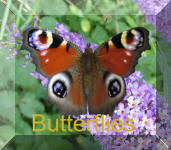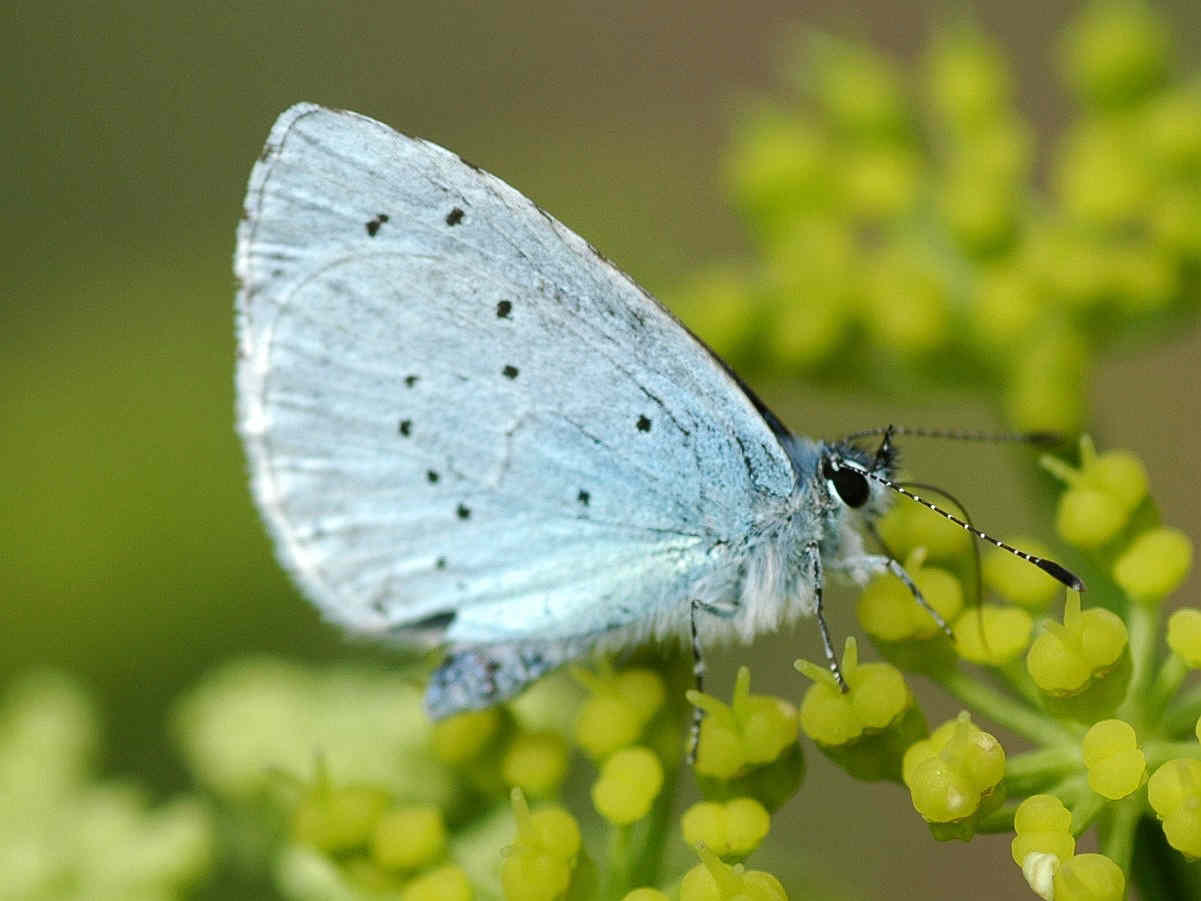Holly Blue ( Celastrine argolius )
BACK TO

Unlike other British Butterflies the Holly Blue Alternates its caterpillar food plants . First generation caterpillars in May / June feed mainly on Holly buds the second in August and September on Ivy. Second generation females have a broader dark band at the edge of the fore wing than that of the first. The delicate blue underside is unique > Holly Blues like Hedgegrows, Gardens ,Sandy Hill Sides , Woodland Clearings
Identification
Wingspan, 30-35 mm.
Males have bright blue upper wings with a narrow dark edging along the outer margin of the forewings. Both wings are edged white with short black bars adjacent to the dark markings of the forewing. The undersides of the wings are a silvery blue with a few, small, scattered black spots.
Females are a more violet blue colour with a broad black border running along the outer half of the front of the forewing and down its outer side. Their hind-wings have a similar black border running along their leading edge and onto the outer edge where it breaks up into black spots along the border of the outer edge. The undersides of the wings are similar to those of the male.
Behaviour and life history
Compared with the Common Blue, Polyommatus icarus, The Holly Blue is a very active and relatively far-ranging butterfly, spending much of its time searching out suitable breeding sites and the females attracted to these sites. It is often seen flying somewhat erratically along woodland borders and hedgerows in these pursuits. The chrysalis over-winters before the first brood adults appear in early April. It lays its eggs on Holly, Ilex aquifolium, berries. The caterpillar pupates towards the end of June and the second brood adults emerge from their chrysalises during mid to late July. The second brood eggs are laid during August on Ivy, Hedera helix, with the caterpillars pupating during mid September. The caterpillars feed primarily on Holly, Ilex aquifolium, for the first brood and Ivy (Hedera helix) for the second brood although other shrubs such as Alder Buckthorn, Frangula alnus, gorse, Ulex spp, and Spindle, Euonomys europaea, may also be used.
Where to look for it: The Holly Blue is a butterfly of hedgerows, woodland edges, rides and clearingsbut is just as much at home in gardens and parks within the city.
Distribution and status
This species has showed a remarkable recovery in numbers over the last few years since the early and mid 1990s when it was extremely uncommon in the city. Its numbers fluctuate considerably from year to year, but in a good year, it is commonly to be seen throughout the City, including its built up areas.
Similar species
The under-sides of the wings, when closed, are the most reliable means of identification. When the wings are opened up, the distinct black border to the females wings is diagnostic. Males look very similar to male Common Blues, Polyommatus icarus, if the under-sides of the wings are not visible, and can usually be identified by their respective behaviour. In flight, it differs from the Common Blue, which generally keeps low to the ground, by usually flying considerably higher along the side of linear features such as woodland edges and hedgerows.
IMAGE WITH THANKS LEON TRUSCOTT (C) 2006
